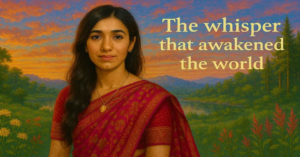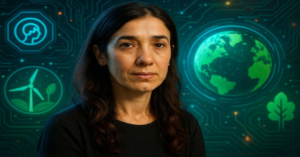Mohammad Younus and the Birth of Social Business: Redefining Capitalism for Global Impact
Muhammad Younus: Banking on the Poor – The Revolutionary Who Redefined Compassion in Capitalism

The air in Jobra village hung heavy with the scent of rotting jute and unspoken despair. It was 1974, and Bangladesh’s famine had turned rice paddies into graveyards. Mohammad Younus, then a Chittagong University economics professor with a Vanderbilt PhD, stepped out of his lecture hall into a reality his textbooks had erased. Amidst scavenging chickens and crumbling mud huts, he found Sufiya Begum: 21 years old, ribs visible through her thin sari, weaving bamboo stools for 12 hours daily. Her profit? Two cents. Trapped by a loan shark who demanded her output at a fraction of its value, Sufiya’s debt was a life sentence. As she whispered, “Even my tears are not my own,” Yunus felt the violent collapse of academic abstraction. That afternoon, he lent $27 to 42 villagers—enough to break their chains. The amount was trivial; the act was seismic. Microfinance was born not in a boardroom, but in the scorching heat of human indignity.
The Architecture of Dignity: How Grameen Bank Rewrote the Rules
Yunus’ epiphany was radical in its simplicity: “Poverty isn’t created by the poor. It’s engineered by systems that exclude them.” Traditional banks saw the destitute as “unbankable”—too risky, too ignorant. But Yunus recognized their invisible collateral: the intricate web of trust in villages where neighbors shared rice pots and childcare. His weapon against poverty? Grameen Bank (“Village Bank”), which replaced contracts with community and collateral with conscience.
Mohammad Younus: The Mechanics of Trust
- Group Lending Circles: Five women—often strangers—voluntarily linked fates. No lawyer witnessed their pact; their bond was shared vulnerability turned strength. When Rokeya’s cow died, her group repaid her loan installments for months. “Her loss was ours,” said Fatema, a co-borrower. Default rates dropped to 1.9%—lower than JPMorgan Chase’s credit cards.
- Daily Micro-Repayments: A fish-seller repaid 30 cents daily at dawn, moments before buying stock at the market. This rhythm respected the pulse of informal economies where a dollar today beats ten tomorrow.
- The Feminist Financial Revolution: After early loans to men funded cigarettes and lottery tickets, Yunus pivoted to women. Imams warned he’d “corrupt society.” His retort? “If a woman earns, she feeds the family. If a man earns, he feeds his ego.” Today, 9.3 million women borrow from Grameen. When Ayesha took her first $35 loan, she buried her face in her scarf, weeping: “Now my daughter won’t be sold as a maid.”
Mohammad Younus: The Ripple Effects of Financial Inclusion
Grameen’s true genius lay in the “Sixteen Decisions”—a borrower’s manifesto etched into village walls:
“We shall grow vegetables year-round. We shall send our children to school. We shall drink clean water. We shall refuse dowries.”
These vows became self-fulfilling prophecies. In Nilphamari district, Grameen borrowers dug 3,000 tube wells. In Satkhira, child marriage rates plummeted 74% after women withheld loans from families demanding dowries. When a cleric denounced Yunus, he disarmed him with theology: “Khadija, the Prophet’s wife, was a merchant. Denying women business is denying Islam’s heritage.”
Mohammad Younus: Scaling Dignity, Defying Skeptics
By 2006, Grameen had dispersed $5.7 billion in loans averaging $150. During Bangladesh’s 1998 floods, while corporate defaults soared, Grameen’s repayment rate held at 97.1%. The model thrived from Glasgow (where addicts became caterers) to the Bronx (where single moms launched daycare co-ops).
But Yunus’ boldest move targeted society’s “untouchables”: beggars. His Struggling Members Program gave 26,000 beggars merchandise—soap, snacks, toys—to sell while soliciting alms. Taslima, a blind widow, recalled her first sale: “A man bought biscuits from me. Then he said, ‘Sit, Auntie. Rest your feet.’ No one had called me ‘Auntie’ in 20 years.”
Mohammad Younus: The Three Zeros and Social Business
Yunus saw microfinance as merely a scalpel for capitalism’s cancerous flaws. “Our system confuses profit-maximization with human purpose,” he declared in A World of Three Zeros. His antidote? A trio of revolutions:
- Zero Poverty: “Charity is aspirin. Entrepreneurship is penicillin.”
- Zero Unemployment: “We train children to beg for jobs. Let them create jobs!”
- Zero Net Carbon: “Profit means nothing on a dead planet.”
Mohammad Younus: The Social Business Experiment
- Grameen Danone: Sold nutrient-rich “Shokti Doi” yogurt through village women. For 10-year-old Rina, battling stunting, two cups weekly added 3cm to her height in 6 months.
- Grameen Veolia: Built water plants selling 1-liter bottles for 1 cent in arsenic-contaminated villages.
- Grameen Intel: Trained 112,000 “telemedicine midwives” to reduce maternal deaths.
“Investors get their money back—and a dividend measured in lives,” Yunus explained. When a French CEO asked, “Where’s the incentive?” Yunus smiled: “Where’s yours when you kiss your child goodnight?”
The Human Spark: Mohammad Younus
Yunus’ faith in human creativity was absolute. “Every person is a bonsai entrepreneur,” he insisted. “Poverty is the pot that stunts our growth.”
The Unlikely Heirs
- Sufiya’s granddaughter, Jesmin, graduated from medical school in 2021—funded by loans her grandmother co-guaranteed.
- Alexa Roland, the McGill student who abandoned Wall Street after meeting Yunus, now runs a social business incubator in Nairobi’s Kibera slum.
- Diego Peña, a former Honduran gang member, used a $200 loan to start a bicycle repair shop. “Grameen didn’t give me money. It gave me back my name,” he says.
Mohammad Younus: The Unfinished Revolution
At 83, Yunus faces political persecution—fined for “tax evasion” many call fabricated. Yet his vision accelerates:
- Glasgow’s Grameen funds refugee-run bakeries where Syrian flatbreads sell beside Scottish scones.
- Yunus Environment Hub backs youth-led climate ventures from Dhaka (plastic roads) to Detroit (urban forests).
- McGill’s Social Business Centre incubates indigenous-owned renewable energy firms.
“They try to jail me because poverty is a $4 trillion industry,” Yunus told the UN. “But no prison is large enough to cage an idea.”
The Eternal Equation
Yunus’ legacy isn’t in the billions loaned, but in dismantling the myth of worthiness. As he told Sufiya:
“This money isn’t charity. It’s a mirror. Look—you see a woman who repays. A mother who invests. A human the world called ‘nothing,’ who will now build everything.”
In villages from Jobra to Johannesburg, that reflection still ignites revolutions. Where bankers saw deficits, Yunus saw infinity—and proved hope could be loaned, not given.
“Poverty belongs in museums. Let our grandchildren point and whisper, ‘How could they have allowed it?’ as they walk past its glass case.”
—Muhammad Yunus

